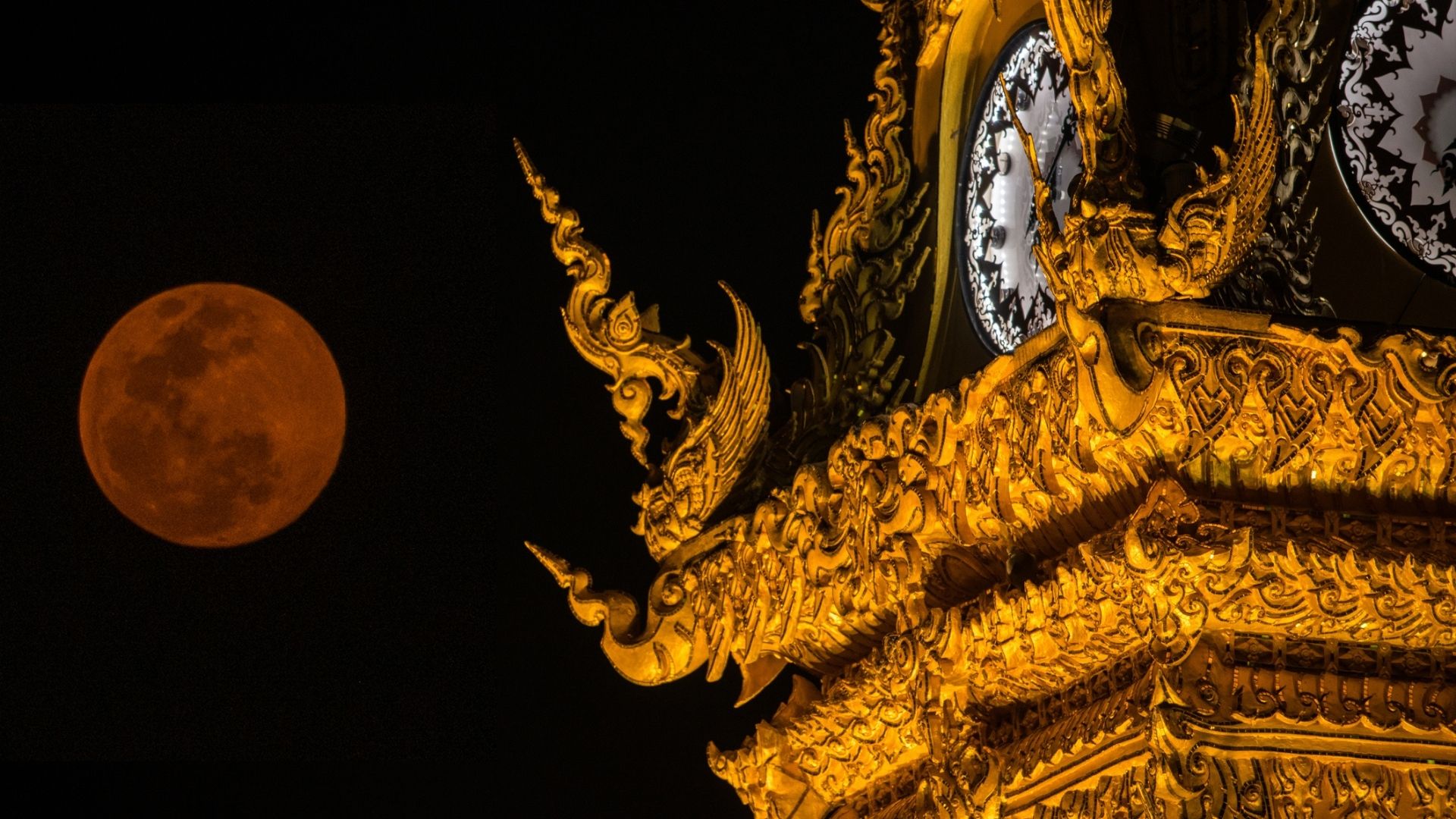
Meteor Crater: Experience an Ancient Impact
Meteor Crater Album
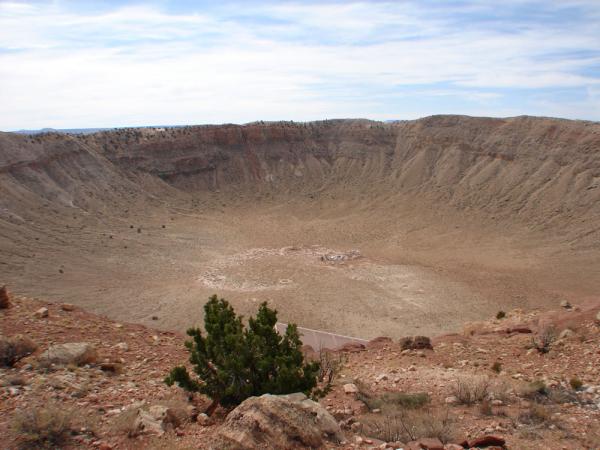
Some 50,000 years ago a nickel-iron meteorite thought to have been about 148 feet (45 meters) across and weighing almost 300,000 metric tons was hurling through space toward Earth. When it struck the Earth in what is today northern Arizona, the impact formed what is today called Meteor Crater.
Meteor Crater Album

The speed of the impact was once thought to have been an incredible 45,000 mph (72,000 kph) but newer calculations suggest a slower speed of impact of only 28,600 mph (46,000 kph). Even at such great speed, only a small percentage of the massive meteorite vaporized in the Earth's atmosphere before striking the northern Arizona ground.
Meteor Crater Album
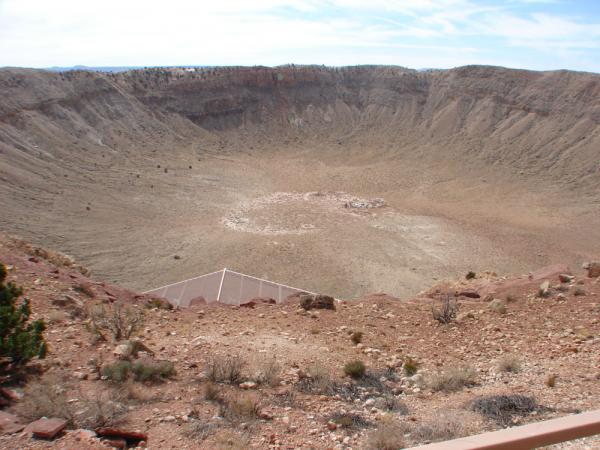
European settlers in the late 19th century came upon the amazing crater in the high desert area of northern Arizona. It was first known as Canyon Diablo Crater (Canyon of the Devil) for the nearby Arizona Territory community of Canyon Diablo. Folks from that small community were sure that this massive hole in the ground was of volcanic origin since so many ancient volcanoes were found just 40 miles (64 kilometers) away in the San Francisco Peaks volcanic field.
Meteor Crater Album

In 1891 the chief geologist of the U.S. Geological Survey, Grover Karl Gilbert, arrived at the rim of the crater to affirm its origin. After several weeks of investigation, Gilbert concluded that the crater was surely caused by a volcanic steam explosion.
Meteor Crater Album

It wasn't until 1903 that mining engineer and businessman Daniel M. Barringer challenged Gilbert's origin theory when he arrived at the crater and found evidence of a large iron-metallic meteorite. Barringer's company, the Standard Iron Company, received a patent for the 640 acres (260 hectares) with mining rights around the center of the crater.
Meteor Crater Album
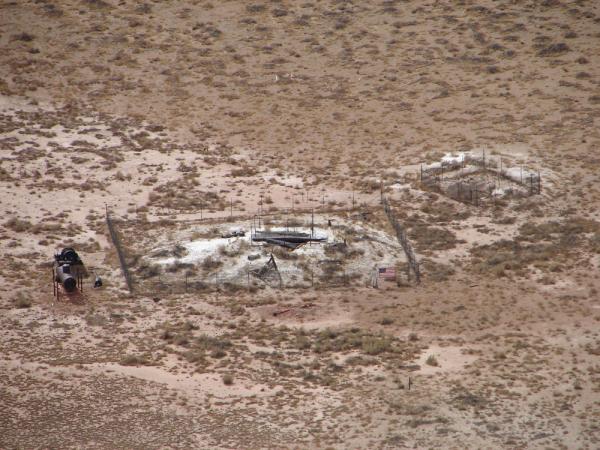
Barringer was sure that most of the massive meteorite still lay buried under the ground of the crater floor. He spent the next 27 years drilling into the crater floor in search of the meteoric iron but no such large deposit of iron was ever found. If such an iron deposit had been discovered, the estimated value of the iron in 1903 would have been more than a billion dollars.
Meteor Crater Album
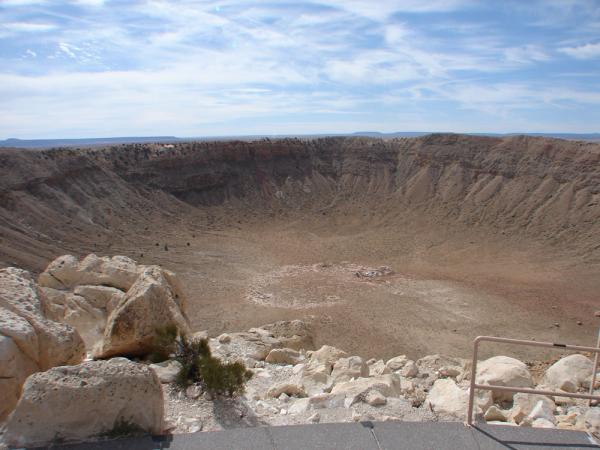
It was not until 1960 that astronomer Eugene Shoemaker was able to finally confirm Barringer's belief of an ancient meteorite impact. The key, undisputable bit of evidence that Shoemaker discovered at the crater was the mineral stishovite, a very rare type of silica that only occurs where quartz rocks have been extremely shocked by sudden overpressure.
Get the world’s most fascinating discoveries delivered straight to your inbox.
Meteor Crater Album

Shoemaker's work proved that about half of the 300,000-metric-ton meteorite exploded upon impact scattering small, iron spheroids over a 7-mile (11-km) range. The other half of the iron-nickel space visitor remains today as microscopic fragments about 3,000 feet (914 m) below the crater floor.
Meteor Crater Album
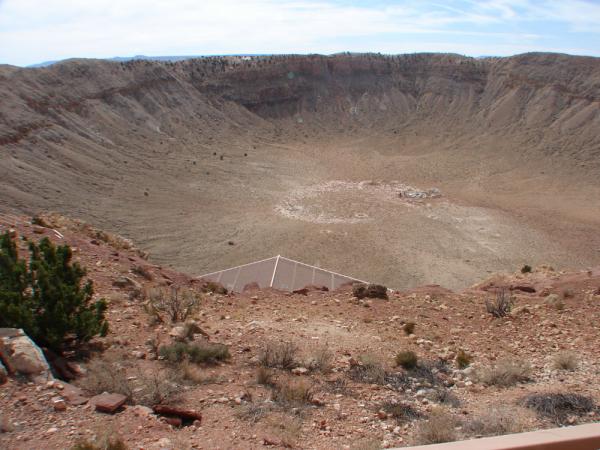
Meteor Crater is over 4,000 feet (1,219 m) in diameter and 570 feet (174 m) deep. The rim created by the thunderous impact rises some 150 feet (46 m) above the surrounding high desert plains. The crater is 2.4 miles (3.9 km) in circumference and the center of the crater is filled with 700 to 800 feet (213 to 244 m) of rock and iron rubble. Twenty football fields would fit on the floor of Meteor Crater.
Meteor Crater Album
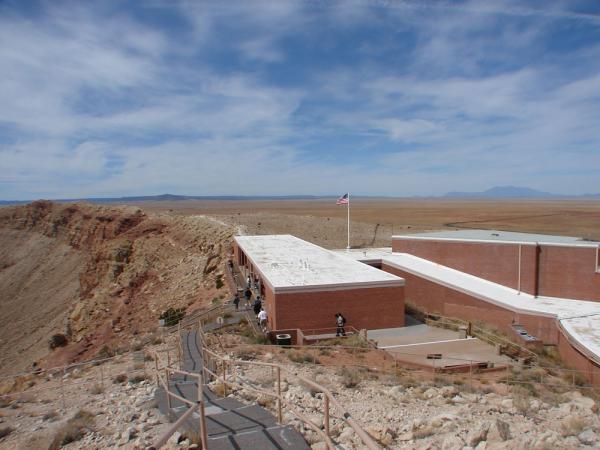
Meteor Crater today is still owned by the Barringer family. A modern, fully air-conditioned visitor center is located on the rim of the impact crater. Interactive exhibits and a wide-screen theater provide ample opportunity for guests to discover and learn about the amazing event that occurred here 50,000 years ago.
Meteor Crater Album
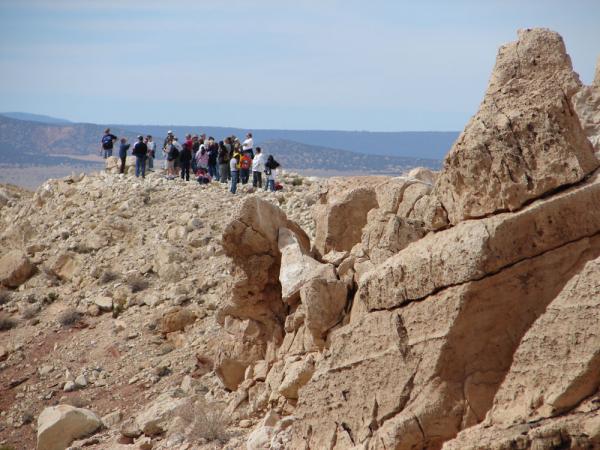
Visitors can choose to walk one of several, self-guided observation trails or join a 0.5-mile (0.8-km) guided tour where knowledgeable docents will share and explain the most amazing of crater facts. Good hiking or tennis shoes are recommended.
 Live Science Plus
Live Science Plus





